Gabriel Fraga is a young artist from Brazil who has contributed some amazing vector art to toonpool.com. Like Michele Rocchetti, he does not use vectors to emulate some other medium but has created his very own digital style. His art is different, however, in that he uses color fields to piece together his superb portraits instead of lines. Anyway, this is part two of our vector graphics special. Enjoy!
![]() Gabriel, your profile says that you’re based in both Sao Paulo and Barcelona. Does that mean you are moving back and forth?
Gabriel, your profile says that you’re based in both Sao Paulo and Barcelona. Does that mean you are moving back and forth?
My mother’s family is from Barcelona. I was born in Sao Paulo but always had wanted to live in the Catalan capital for a while. So in 2007 I went there to finish my studies and to work. I stayed in Spain until earlier this year.
Today, back in Sao Paulo, I stay connected with Barcelona regardless of physical presence. The two cities are very disparate, both have their positive and negative characteristics, but they are also both very inspiring. That’s why I try to keep my presence in both places. With a little bit of luck and planning, I believe it is perfectly possible for now. Maybe one could say that my profile does not so much tell about “where I am” as about “places that I belong.”
How long have you been using computers for your art?
Since the age of 14. I was lucky to be invited to work in an illustration and internet studio in Sao Paulo where I learned how to use the digital tools I’m still working with today: software such as Illustrator and Photoshop, Mac computers and Wacom tablets. At the same time I had a job doing live caricatures at events. In my vector portraits I combine my experience from both jobs.
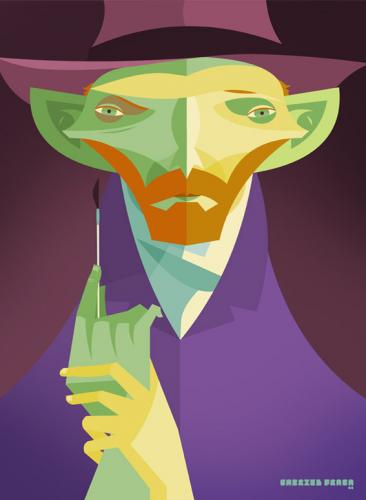 The James Brown caricature you posted on toonpool.com shows that you do scribbles with a pencil before using your computer. Could you explain the steps on the way to a finished caricature?
The James Brown caricature you posted on toonpool.com shows that you do scribbles with a pencil before using your computer. Could you explain the steps on the way to a finished caricature?
I believe that hand sketches give a natural and special gesture to the final vector work, different from purely digital works. That’s why I prefer to do some free studies on paper before moving to the digital media. These studies preview the “geometric deconstruction” of the character I am drawing that forms the base of my work. For me it’s the most fun part of the work … it’s just like a game! Once I have solved the geometrical question on paper, I use the vectors to confirm and adjust the forms and to generate the colors. Finally I adjust tones and light effects in Photoshop.
Can you describe that process of geometric deconstruction?
Actually, the process is quite simple: I try to structure the image with the fewest lines possible, to reduce it to geometric forms. What I try to do is to preserve complex characteristics such as personality and expression during this deconstruction and perhaps even have them exaggerated that way. Sometimes it works!
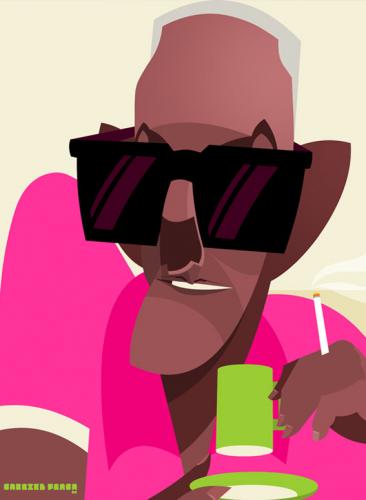 When looking at some of your work I couldn’t help but feel reminded of three-dimensional polygon characters – as in older computer games. Would you say that when geometrically deconstructing the characters you have a three-dimensional construct in mind or rather a two-dimensional set of color-fields?
When looking at some of your work I couldn’t help but feel reminded of three-dimensional polygon characters – as in older computer games. Would you say that when geometrically deconstructing the characters you have a three-dimensional construct in mind or rather a two-dimensional set of color-fields?
Perhaps my considerations while drawing are related to he mathematical simplification of form, similar to the system of triangulation of the 3D process. I do not limit myself to just one angle of the subject – to only one photograph, for example. I imagine it 3-dimensionally and this is reflected in the final result, that’s what creates the sculptural effect. I also consider other “dimensions” beyond form. The personality and body language of the person pictured are two of them. The 4th and 5th fundamental dimensions of my work, so to say. Bu regardless of this “mathematical” aspect and the fact that I finish my work on a computer, the whole thing is a very organic process for me. I observe the fluidity of the lines and play with it.
Is your method of deconstruction influenced by any specific art form or artist?
Cubism, especially Synthetic Cubism, is a great source of inspiration to me. I also like the aesthetics of Pop Art and Russian Constructivism. Since deconstruction is also the main characteristic of caricature, I would say that I’m also influenced by a number of cartoonists and caricaturists like Cassio Loredano. There are some digital artists that I admire, too. This week, for example, I discovered a French artist named Niark1 whose work is really interesting.
Is there something you especially like about working with vectors? Something that makes you prefer it to “traditional” media?
Yes. I’ve always liked the “sharp” look of the forms. Vectors provide a synthetic texture that would only be possible in traditional media with many hours of work and high precision in the finish. Moreover, the digital tools allow me to model the forms until they seem adequate to my intentions. In the traditional way, this process is also more complicated.
Regardless of these concerns and the fact that the market is much more focused on digital solutions — that’s what I have observed — I always have a piece of paper and a handful of pencils and watercolors by my side. I believe that developing traditional techniques adds quality in digital final work and adds some value to an artist’s production. Still, I don’t finish as many works with traditional media as I would like to. I have studied a little traditional techniques such as oil painting and watercolor but still feel very much tied to the digital world..
Thanks for your time!
Click here to read part 1 of the vector special.
Paul Hellmich
© toonpool.comTags: Gabriel Fraga, vector, vektor
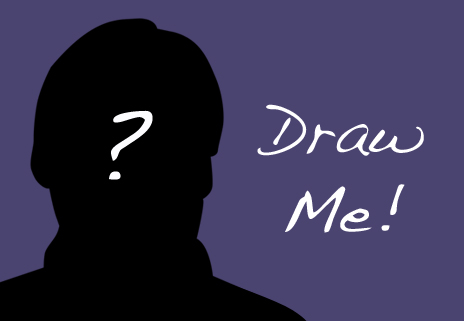
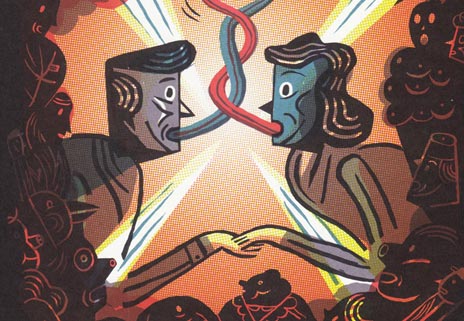
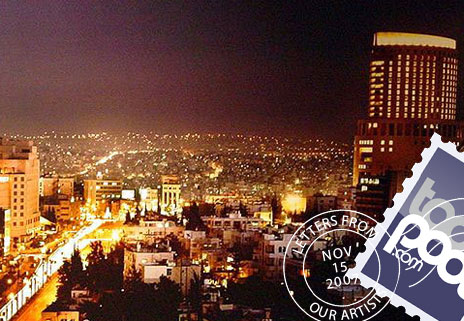
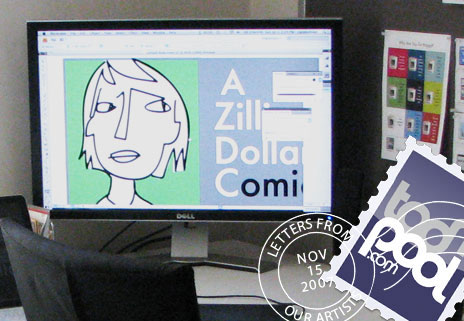
[...] Click here to read part 2 of the vector special. [...]
your work is amazing!
Gabi eres la caña! Son geniales!
FELICIDADES***